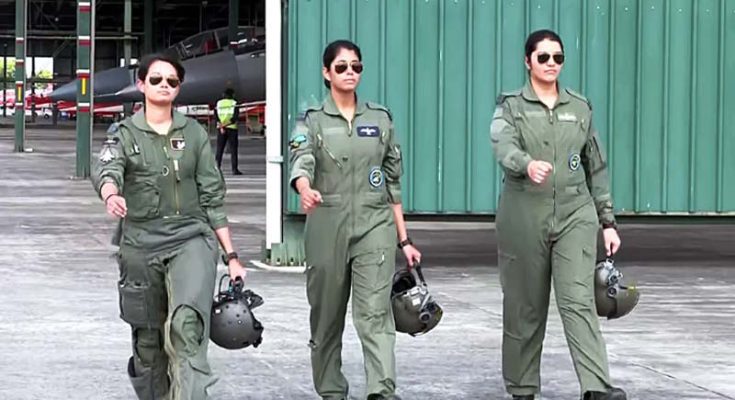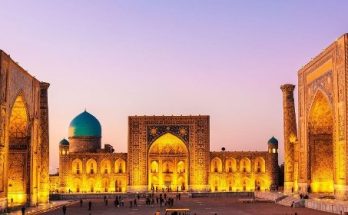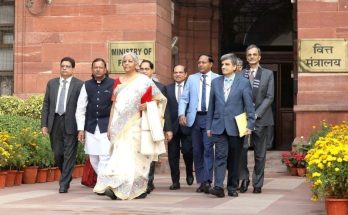#IndianArmy, #India, #IndianSquadron
This week, India’s Armed Forces reached a new milestone in their ongoing transformation.
Squadron Leader Mohana Singh became the first woman pilot to be inducted into the prestigious unit that flies the indigenously developed LCA Tejas combat jet.
Her achievement is not just a personal triumph; it symbolizes the broader and crucial evolution of women’s roles in the Indian military.
As women shatter old barriers, their contributions are reshaping one of the world’s largest and most complex armed forces.
The integration of women into India’s defense structure is not a new phenomenon, but the pace of progress in recent years has been remarkable. While women have served in the Indian Army for over three decades and were always part of the Medical Corps, their entry into combat and command roles has accelerated only recently.
This advancement is crucial for both symbolic and practical reasons. It signals a profound shift in the nation’s thinking—breaking away from stereotypes that often associate military strength exclusively with men—and highlights the multifaceted skills women bring to modern warfare.
Former Indian Army officer Nithi CJ, who served in the elite Military Intelligence (MI) unit, underscores the distinct qualities women bring to the battlefield. Women’s intuitive and empathetic leadership styles, honed through their unique social experiences, make them particularly adept at understanding and outmaneuvering adversaries.
Nithi’s anecdote of using emotional intelligence during an interrogation to extract vital information is a telling example of how female officers can exploit psychological insights in ways that might differ from their male counterparts. It’s not just about physical strength but strategic depth, emotional awareness, and tactical creativity.
But the growing presence of women in India’s armed forces is more than just a tactical advantage. It’s a cultural transformation. For decades, the Indian military was seen as the last bastion of male dominance. Now, women are breaking through these barriers, not only as symbols of gender equality but also as exemplars of competence and dedication. As Nithi points out, women are often driven by a higher degree of commitment to defy societal norms, making them some of the most resilient and adaptive leaders in the military.
The opening of institutions like the National Defence Academy (NDA) and Combined Defence Services (CDS) exam to women represents a significant step forward.
These changes are leveling the playing field and ensuring that female officers receive the same rigorous training as their male counterparts.
This parity in training is essential for establishing credibility and competence in an organization where battlefield readiness can mean the difference between life and death.
The result has been a rising number of women commanding battalions, serving in the Assam Rifles, Rashtriya Rifles, and even taking on key roles in the artillery divisions and Military Police.
What distinguishes these women is not only their ability to meet the physical and mental challenges of military life but also their unique capacity to foster strong relationships with the troops they command.
Compassion, often undervalued in military settings, plays a crucial role in fostering morale and unity within the ranks. In a high-stress environment like a battlefield, the ability to connect with and inspire subordinates can be a decisive factor in a unit’s success. Women’s natural capacity to build these emotional bonds can significantly enhance the effectiveness of their leadership.
While the integration of women into combat roles is still in its relative infancy, the successes so far suggest that this is just the beginning.
The Indian Armed Forces have long been known as one of the world’s largest volunteer forces, priding itself on its diversity and adaptability.
As more women rise through the ranks and take on leadership roles, they are not just making history—they are reshaping the future of military strategy and operations.
This progress is about more than military efficiency or the breaking of glass ceilings; it is about a fundamental rethinking of what leadership looks like in the modern world.
As the global security landscape becomes increasingly complex, the ability to think outside traditional hierarchies and bring fresh perspectives to the table is more critical than ever.
Female officers, with their unique combination of emotional intelligence, battlefield competence, and sheer determination, are proving they are up to the challenge.
As India continues to modernize its defense forces, the contribution of women like Squadron Leader Mohana Singh and countless others will be pivotal.
Their presence in combat roles not only enhances operational capabilities but also represents a profound cultural shift.
The military is no longer an exclusively male domain; it is a place where women’s voices, strategies, and leadership are driving India toward a stronger, more inclusive future.
The induction of women into combat roles is not simply a victory for gender equality—it is a strategic imperative.
By embracing the full spectrum of talent within its population, India is preparing its armed forces for the complexities of modern warfare, ensuring that it remains agile, innovative, and formidable on the global stage.
(Image and text courtesy: Khalsavox.com)





